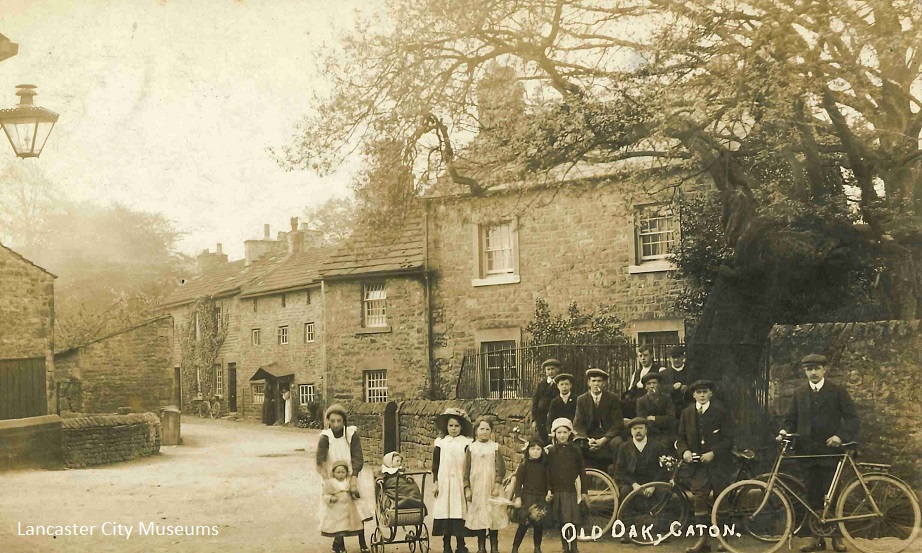Caton hasn’t changed as a name in almost 1,000 years – being spelt as ‘Catun’ in the Domesday Book. It is likely to be a good example of what are known to placename scholars as ‘Grimston hybrids’. This is when a placename has a Norse or Danish personal name plus Old English ‘tun’.
In the case of Caton, the village is probably named after a man called Kati – which is an Old Norse personal name and reflects the Norse influence on the Irish Sea region.
There are a lot of ‘tuns’ (larger settlements) that have a personal name at the start, either Anglo-Saxon or Scandinavian. They seem to have come into being from the 950s onwards when the earlier large estates were breaking up to form manors and townships. At the same time the larger areas served by the minster churches were breaking up to form parishes.
The photo shows the ‘Town End’ of the old township of Caton, which was centred on Brookhouse. It was officially named as Caton in the 1800s when the Post Office decided that the area was too big for the whole township to come under ‘Caton’.
The mill stream that runs by the Old Oak was fed from the Artle Beck further up the valley. It drove five mills at one point – Caton Low Mill (cotton), Rumble Row Mill (turning), Willow Mill (bobbin), Caton Forge Mill (bobbin) and a corn mill.


